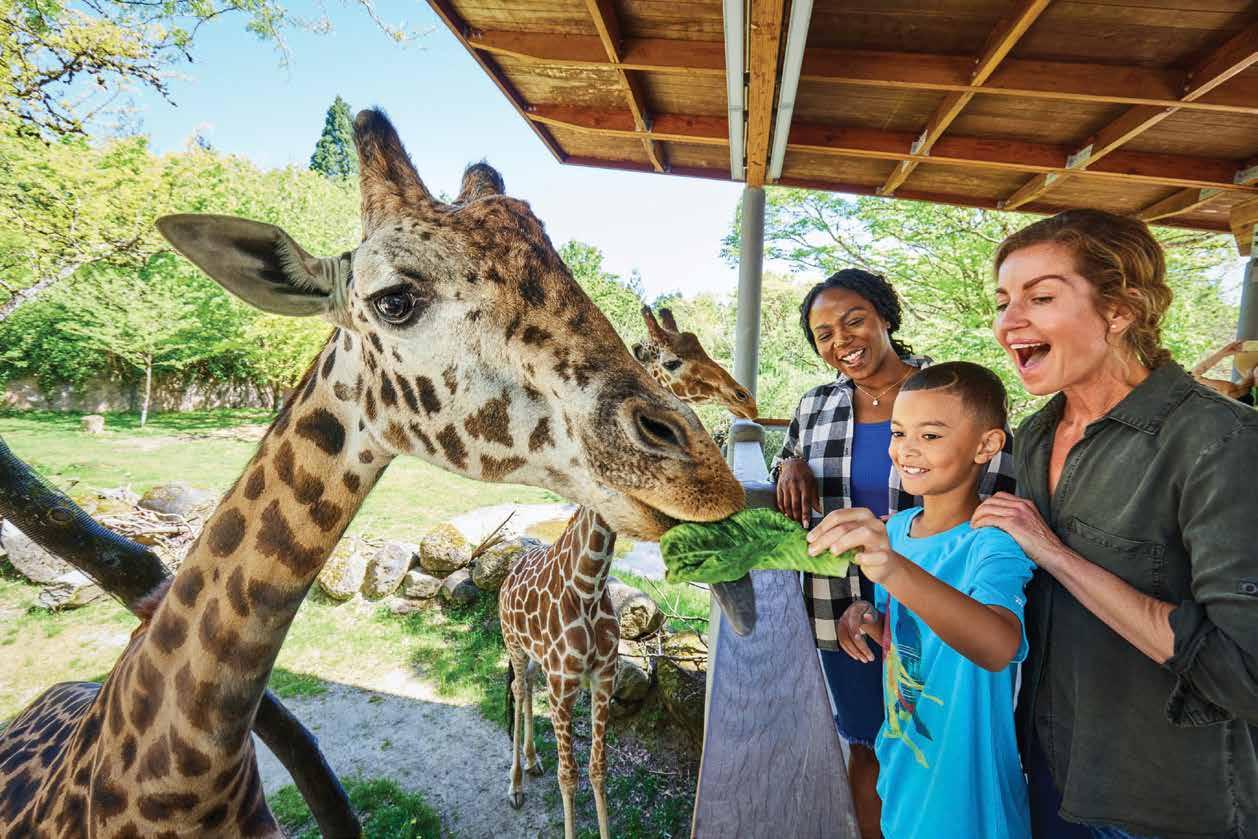






It’s time to enjoy the last summer days before it’s back to the classroom for kids. For our annual Back-to-School issue, we asked writer and mom Shasta Kearns Moore to take a look at how special education students are faring in the wake of COVID school closures. Find the first article in our two-part series on page 14. We’ve also got our helpful, annual Private School Guide, which allows you to compare student-to-teacher ratios, tuition costs, languages taught and more at some of our area’s top private schools.
In our generally gender-affirming Portland bubble, back to school is not quite as scary for trans and nonbinary children and youth as it could be in states like Florida or Texas. But there are still pockets of misinformation and hate. In the spring, after a local, hateful, right-wing radio host stoked unfounded fears about an optional, after-school Pride event, threats rolled into the Atkinson Elementary staff and school. Willamette Week reported a window was broken at the school. Because the safety of kids and families could not be ensured, the event was canceled. The people who believe drag performers can harm children, actually did inflict trauma and harm on the kids and families at Atkinson. And further marginalized LGBTQ+ youth and families hoping to celebrate in a safe space.
Why are safe spaces and celebrating gender identity so important for LGBTQ+ youth?
As writer Robin Lanehurst states in their story Transcending Uncertainty on page 18, according to The Trevor Project, 90% of LGBTQ+ youth surveyed in Oregon expressed that recent politics have harmed their well-being. And 54% of transgender and nonbinary youth in our state have seriously considered suicide. But trans youth who have their name and pronouns respected in even one area of their life, be that school, home or a friend’s home, are a third less likely to have thoughts of killing themselves. Even if the concept is foreign to you and you don’t understand transitioning to different pronouns, we hope reading Transcending Uncertainty will give you the tools to make your home a welcoming and safe space. And understand that you have the power to help save a kid’s life.
Allie Tellez of Beautiful Feeling Photography captured all the excitement of back to school in this photo of her son Julian. Tellez asked her school district if she could tour its transportation lot with Julian and take some photos. “They went above and beyond for him and even let him sit inside the bus and in the driver’s seat,” says Tellez, a former teacher who really loves photographing kids. See more of her amazing work at beautifulfeelingphotography.com and on Instagram @beautifulfeelingphotography

for the long days and short years
PDX Parent
P.O. Box 13660 Portland, OR 97213-0660
Phone: 503-460-2774
Publisher Jill Weisensee, 503-460-2774 publisher@pdxparent.com

Editor Denise Castañon, 503-922-0893 denise.castanon@pdxparent.com
Managing Editor Tiffany Hill tiffany.hill@pdxparent.com
Art Director Tiffany Howard tiffany.howard@pdxparent.com
Web Content Coordinator Meg Asby meg.asby@pdxparent.com
E-newsletter Editor Anne King anne.king@pdxparent.com
Westside Account Executive Lauren Wylie, 503-331-8184 lauren.wylie@pdxparent.com
Eastside Account Executive Alice Schulz, 971-236-4037 alice.schulz@pdxparent.com
Digital Ad Manager/Calendar Editor/ Distribution Coordinator Melissa Light melissa.light@pdxparent.com
Accountant Kelli Bagby Truly Bookkeeping, Inc. Vice President of Operations Rose Caudillo operations@pdxparent.com
For distribution issues, e-mail us at distribution@pdxparent.com For calendar submissions, e-mail us at calendar@pdxparent.com
PDX Parent is published monthly (except July) by Northwest Parent, LLC., and is copyright 2021 Northwest Parent, LLC. All rights reserved. Reproduction in whole or in part without written permission is prohibited. PDX Parent is distributed free of charge throughout the Portland, OR / Vancouver, WA metropolitan area. PDX Parent reserves the right to refuse advertising for any reason. Distribution of this publication does not constitute an endorsement of the products or services advertised herein.
PDX Parent does not discriminate on the basis of race, color, national origin, religion, disability, gender, gender expression, sex or sexual orientation.
Although every effort is taken to ensure the accuracy of published material, Northwest Parent, LLC., and its agents and employees cannot be held responsible for the use or misuse of any information contained herein. The contents of PDX Parent and its website are for informational purposes only and are not intended to be a substitute for professional advice or treatment.









Women have unique health needs. Our team believes you’re the best expert about you, so we partner with you to personalize your care so help you stay healthy not just now, but for the rest of your life.
Claire Steen MD
• General gynecology, including wellness visits.
• Family planning, pregnancy and birth.
• Postpartum care, including specialty rehabilitation when needed.
• Surgery and specialized procedures.
• Menopause and hormone therapy.
We all know Portland has a reputation for being an excellent bicycling city. But dedicated bike lanes and stellar repair shops aside, not every Portlander has the luxury of owning a properly sized and maintained ride. Enter Bikes for Humanity PDX. Since 2005, the nonprofit has connected the Portland area community with bicycles and bike knowledge and empowerment.
The Bikes for Humanity PDX, or B4H PDX model is simple: Thanks to donations, the organization is able to provide free or low-cost bikes for residents of all ages, sizes and skill levels. Each rider is also equipped with the knowledge and skills to clean, maintain and do simple repairs through the nonprofit’s workshop program.
“Our organization believes every cyclist can rely on their bike, maintain it, and support other cyclists better with some basic mechanical knowhow,” says director Andrew Shaw-Kitch.
In its roughly 18 years of existence, Shaw-Kitch says the organization has received nearly 10,000 bikes. Of that number, half have been refurbished by staff and volunteers, including kidspecific bikes. (The rest have been scrapped and used for parts or sold as-is to home bike mechanics and partner organizations.)

“The pride of our organizations is working with Portland Public Schools and other local districts to grant bikes to students who have completed our bike safety program or are referred to us because they’ve outgrown their bike, had it stolen, or otherwise want to ride to school and can’t,” he says, adding that B4H PDX receives about 10 bike donations each week, year round.
It’s easy for families to get involved, too, from donating bikes, to volunteering in the Southeast Powell shop. Shaw-Kitch says a lot of what volunteers do is clean donated bikes, while also learning about their mechanics. He adds that the organization is also seeking new board members.
B4H PDX is hosting free repair events in Gresham near the Coho picnic shelter (just north of Tsuru Island) from 11 am-2 pm on the second Saturday and third Tuesday of the month now through September.
For more information and to schedule an appointment to donate, test ride a bike or volunteer, visit b4hpdx.org. — Tiffany Hill
A: It feels like this is the first “normal” summer when it comes to family travel. Family vacations are great opportunities to connect and create lifelong memories. If you are headed to any international destination, check out the CDC’s website for travel before you go (cdc.gov/travel). It provides travel notices and guidance, recommended vaccines, and recommendations for preventive treatments against malaria. There are also local travel clinics that provide consultations in addition to stocking the harder to find vaccines such as yellow fever.
For Thailand in particular, the CDC recommends all routine vaccines (DTaP, polio, varicella, MMR, hepatitis A, hepatitis B, flu and COVID) in addition to the typhoid vaccine, possibly the rabies vaccine, and malaria medications, depending on where you are going. (The website has detailed maps to consult to see if malaria treatments are needed.) Rabies vaccination is recommended if kids will be around dogs or wildlife, or in more rural areas.
You will also want to ask your pediatrician if your 10-year-old needs a TdaP. Some clinics give this at 10 years, and some at 11 years. If they are turning 11 during the trip or within a few months before, it’s a good idea to go ahead and get that one in case they get injured while traveling to prevent tetanus.
If it’s your first time traveling to a new country, schedule a consultation with your local travel clinic, or schedule an appointment with your pediatrician to review vaccines and travel tips. Bon voyage!
Pediatrician, International Board Certified Lactation Consultant, Fellow in the American Academy of Pediatrics and mom of two, Allison Baynham, M.D., knows what it takes to raise healthy, resilient children. Come bond, share your struggles and team with her for great care at Metropolitan Pediatrics in Tigard.

It’s that time of year — back to school! Whether your little is heading to the classroom for the first time, or you have a classroom pro, Kim Tano and Madeline Shier, the children’s book buyers at Powell’s City of Books have your child’s reading (and yours!) covered this month with fun, engaging reads on all things school. Look for these titles at the Burnside, Hawthorne or Cedar Hills Powell’s locations, or order online at powells.com.
Unicorn’s School Day by Lucy Golden, illustrated by Sophie Beer

Beer’s playful illustrations bring Golden’s telling of Unicorn’s school day to joyful life, plus children will love turning the wheels on the pages to fill in the blanks. This board book is a great way to introduce toddlers ages 2 to 4 to some of the concepts they can expect out of preschool, and school in general, including circle time, arts and crafts, recess, and lunch. (We’re also particularly fond of the teacher llama’s wardrobe design; we want those eyeglass frames and that great chunky necklace.) $9.99.
School Trip written and illustrated by Jerry Craft
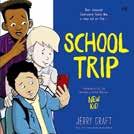
School Trip, the third book in the award-winning New Kid series, finds Jordan, Drew, Liam and other kids from Riverview Academy on a school trip to Paris. Navigating a different country and culture, along with dealing with microaggressions and racist comments, turns into helpful lessons about the importance of having those hard conversations and standing up for yourself. Great for ages 8 and up. $14.99.
Mr. S written and illustrated by Monica Arnaldo
In this sweet and funny first-day tale, the kids in classroom 2B (a delightfully and realistically diverse bunch) start their day with no teacher to be found; only a sandwich on the front desk and “Mr. S” scrawled on the chalkboard. As they debate whether this lunch food could be their teacher, they end up spending most of the day teaching themselves. We especially love the rousing chorus of “Mary Had a Little Ham” in their music lesson. Great for ages 4 to 8. $19.95.

School by Davide Cali, illustrated by Benjamin Chaud
In A Funny Thing Happened After School, Henry and Ali explain why they didn’t do their solar system homework to their teacher. Follow the pair as they recount how they got distracted by strange-butfriendly space creatures, a visit to the Space Station, and a moon detour. Vibrant, detailed illustrations and a super fun story make this perfect for ages 5 and up. $12.99.

As parents on the other side of childhood, we can forget that growing up is hard work. And for kids whose gender identity falls outside the binary, it can be even harder. Enter The Rainbow School, an after-school program from The Reframe Collective that helps kids grow up to be their authentic selves. While The Rainbow School is open to all 10- to 22-year-old youth, it’s especially focused on supporting queer and trans youth. Youth will be separated in age-affinity groups where participants can find likehearted, gender-expansive, justice-rooted peers. You can find out more at thereframecollective.com/therainbowschool. —
 Denise Castañon
Denise Castañon

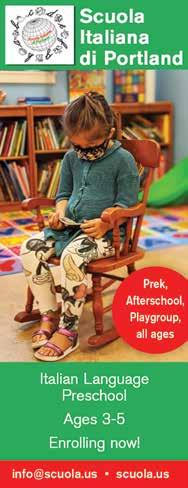
Rosebud Preschool is Portland’s only Reggio-inspired, intergenerational preschool for children ages 24 months to five years old. Located within Rose Villa Senior Living’s expansive 22-acre campus.

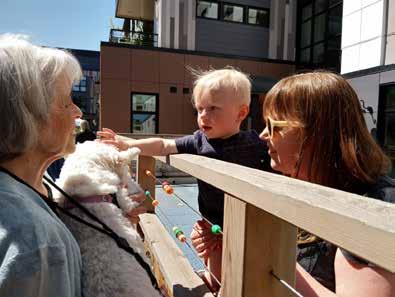
SCAN HERE TO VISIT US AT rosevilla.org/preschool

Preschool, Kindergarten & Childcare Center
4845 SW Murray Boulevard, Beaverton, OR 97005 503-644-1466 | sunshine-montessori.com


Ages: 2 years through Kindergarten
Hours: 7:30 am - 5:30 pm (Mon - Fri)
• Locally owned and operated
• Serving the community since 1996
• Qualified & consistent staff
Early Learning School

14950 SW Osprey Drive, Beaverton, OR 97007 503-579-0600 | childs-place.com
Ages: Infant through Kindergarten
Hours 7:00 am - 6:00 pm (Mon - Fri)
• Large outdoor play areas
• Snacks & lunch prepared and served daily
Find

525 SW 150th Avenue, Beaverton, OR 97006 503-626-0457 | www.nwlearning.com
Ages: Infant through Kindergarten
Hours: 7:30 am - 5:30 pm (Mon - Fri)
Preschool, Kindergarten & Childcare Center
17650 SW Alexander Street, Aloha, OR 97003 503-591-9660 | www.mayflower-montessori.com
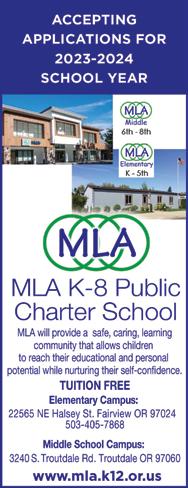
Ages: Infant through Kindergarten
Hours: 7:00 am - 6:00 pm (Mon - Fri)


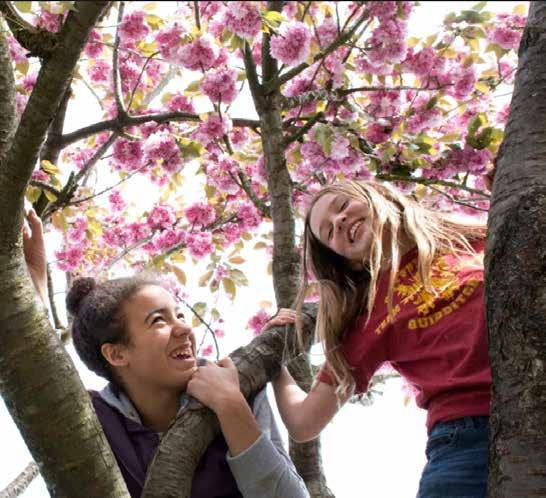

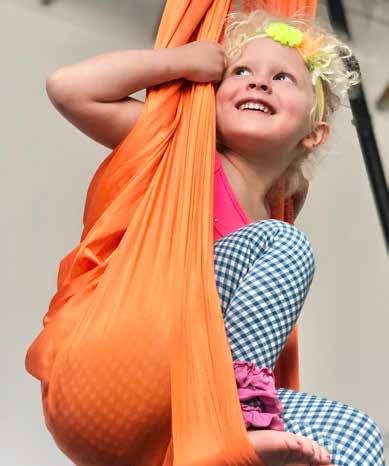




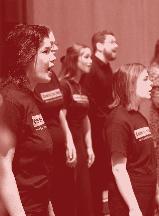

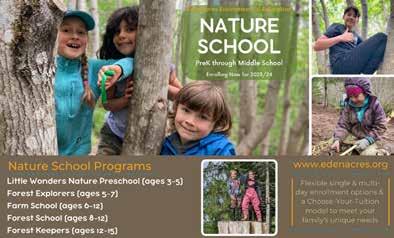




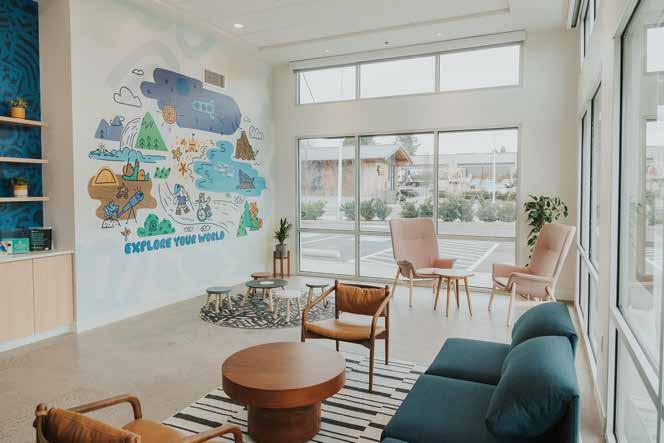



In the first of a two-part series, we spotlight the challenges parents and caregivers face in navigating special education in Portland.
 BY SHASTA KEARNS MOORE
BY SHASTA KEARNS MOORE
At first, Neil Haigh was not that alarmed. This was early January and the Southwest Portland dad had gotten a call from school that his daughter Mattea’s feeding tube had come out, so could he please come fix it?
Mattea (pictured left with her father), a 10-year-old with blue eyes and golden hair, is nonspeaking and needs a range of medical supports, such as her gastronomy tube or “g-tube” that attaches like an earring in the wall of her stomach to provide her nutrition.
Haigh replaced the g-tube, and suggested that the Markham Elementary School staff receive additional training. But a staffer tipped him off that it wasn’t necessarily an adult who was responsible for the g-tube situation and when he got Mattea home, he noticed bruising on her arms.
“It felt like a bit of a cover-up and that’s when I got more involved,” Haigh says.
After weeks and hiring a legal team, the family finally got a copy of the incident report.
“[A student, name redacted] pulled out another student’s ‘mickey button’ which is part of their feeding apparatus,” reads the report. “The button was under the student’s clothing. Removing this button in this way takes significant force and it is painful to have it ripped out of the stomach.”
Mattea’s parents were shocked. Haigh started organizing with other classroom parents and discovered that the incident was just the “tip of the iceberg.” Kids were getting hurt, other parents alleged. And the classroom was struggling with a two-yearlong string of teachers and support staff who had quit or left without returning, often citing a lack of support and safety.
“What happened to Mattea was awful, but it was a result of years and years of malpractice,” Haigh says. “We have no beef with (the child who removed Mattea’s g-tube). That kiddo is just a kiddo who has a lot of needs and wasn’t being adequately supported.”
There are 6,916 different experiences of special education in Oregon’s largest school district because, at last count, there are
6,916 special education students in Portland Public Schools (PPS). Guided by Individual Education Programs or IEPs — a teamdesigned plan for each disabled student’s particular needs — special education can be as simple as providing extra time to finish a test or as challenging as providing a one-toone adult who can constantly, consistently, and instantly set expectations, react to changing conditions and buffer explosive behavior.
By some metrics, PPS’ special education department is doing well. The vast majority of special education students are integrated into the general education environment at least 40% of the time, with 81.3% integrated 80% or more of their day. The graduation rate for special education students sits at 82.4%, which is higher than the state target.
“PPS can stand up and be proud that that’s true,” says PPS Student Support Services Chief Jey Buno, of these statistics. “Because that’s not the same case everywhere else.”
Nevertheless, many people PDX Parent talked to for this series described a crisis in the district: safety risks to children and staff, overwhelming caseloads and a lack of action at the top.
This month, we’ll explore some of the challenges PPS is facing and how they fit into the national landscape. In November, we’ll look at some of the solutions proposed and how they might affect the next school year.
As for the Haighs, Neil says they tried hard to fix the Markham classroom but found the challenges insurmountable as the dysfunction was happening at the administrative-level for staffing and classroom design. The IEP team agreed to move Mattea to West Sylvan Middle School a few months early.
“West Sylvan has been eye-opening in the other direction in how good it is,” Haigh says. “It’s amazing how well that classroom is run, how the lessons are adapted.”
In 2015, Mary Pearson, then-head of special education at PPS, presented to the school board a bold vision for integrated classrooms across the district, where general education and special education teachers taught side-by-side, adapting a universally designed curriculum across the range of student needs. She called it Reach 2020 to imply that the vision would be put into place by the year 2020.
We all know what really happened in 2020.
The COVID-19 pandemic disrupted learning for all students, but a recent report from the Center on Reinventing Public Education analyzed the available data to find that, on the whole, disabled students fared worse. Though there is not much good data, indications are that those students generally have lower test scores, higher rates of intensified mental health concerns and fewer supports in place than pre-pandemic.
The pandemic also seems to have ushered in a wave of staffing crises. A March report from the National Center for Education Statistics says nearly half of the nation’s schools are struggling to fill at least one teaching position.
“Of schools reporting at least one vacancy, special education was identified as the teaching position with the most vacancies, with 45% of schools reporting this vacancy, followed by general elementary teaching positions (31%) and substitute teachers (20%),” reads the report. “Resignation was reported as the leading cause of teacher vacancies (51%), followed by retirement (21%).”
“We tried to go back to ‘normal’ — just to how it was before — and didn’t address for anyone in the building what we just went through. What we were doing before wasn’t totally working. And now we’re trying to do that thing still, and it’s completely not enough,” says Paulette Selman, a former school psychologist who now works as a special education advocate
and education consultant in Portland.
Eoin Bastable is a Portland parent and a former program administrator of a rapid response team — a group of behavior intervention specialists that would get called into particularly tricky situations at schools.
“It continues to be a very siloed system,” Bastable says of PPS. “They don’t collaborate in the ways that everybody would like them to.”
He now produces a podcast and is raising a rising fifth-grader with an IEP. His son has Angelman’s syndrome, a genetic disorder that results in a wide variety of intellectual and developmental disabilities.
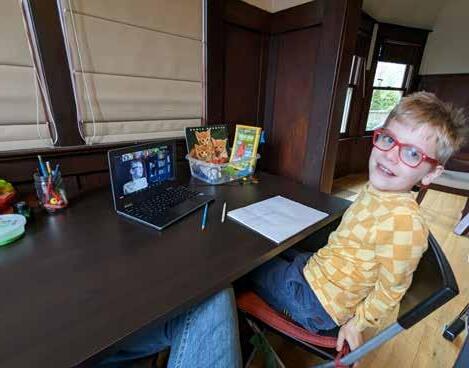
“What we noticed — at least in our family — is that the pandemic really exposed a lot of truth, I would say, in how students with disabilities are treated,” Bastable says. “The pandemic really revealed to me what some of the priorities are for the school district and I don’t think Portland is alone in that.”
The pandemic did have some silver linings: The federal government released billions of dollars in special one-time funding through stimulus plans like Elementary and Secondary School Emergency Relief or ESSER. Portland Public
Schools says it served 949 students with about $2 million it received for “recovery services.” But that program ended this summer.
One group of parent advocates wishes PPS would learn from what worked during the pandemic: those whose children were students of PPS’ Online Learning Academy (OLA). Created in 2021, the program was a fully virtual option that several families felt worked well for their students. Among the 225 students enrolled in the 2022-23 school year, 71.1% were from what the district considers “underserved groups,” including 24% with IEPs.
PPS announced in January that it would be shuttering OLA. The district’s position is that there is no longer funding for OLA and no longer a need for the district to provide virtual learning.
Hollis Blanchard says OLA was revolutionary for his autistic son, Reiter (pictured below), who was first enrolled in the program as a third-grader. Blanchard says Reiter previously attended Abernethy Elementary School, where everything from his behavior to his academics was “a huge struggle for him. And not just him. It was a struggle for us and for the staff and for the classmates.”
After moving to virtual school, Reiter has no discipline issues at all. He has been referred to Talented and Gifted services and excels in all his subjects.
“It’s night and day,” says Blanchard. “It is hard, but it is also so worth it.”
When Blanchard learned that OLA was shuttering, he organized parents, lobbied school board members, hosted a town hall meeting on the need for the online school and even fundraised for a lawsuit. But on May 24, he admitted defeat.
“To be honest, I’m not entirely sure what we’re going to do (for school next year),” he says, adding that Reiter might attend school outside of the district. “For many kids with disabilities, this (closure) is a really, really big deal.”
Jey Buno wants to focus on the good. The district’s chief of Student Support Services and former special education director sees a lot of progress over the past year, both at the individual and district-wide level.
“I work with staff across the system that work really hard every single day to provide services and supports for students with disabilities,” Buno says. “The state of special education is we are all working collectively very hard to ensure robust services to students.”
At the beginning of the 2022-23 school year, there were about 70 open paraeducator positions (paraeducators, or paras for short, are staffers who provide support to teachers and students, primarily in special education). By the end of May, that figure had dropped to 11, of which five vacancies were at Pioneer Special School and three at DART schools, both of which are specialized programs for high-needs children. The district also started the 202223 year with 13 open special education teaching positions, but through recruitment and long-term substitutes, there were just two unfilled spots by the end of the year at Marysville K-5 and Harrison Park K-8.
“We’ve been to all the recruitment fairs in the Northwest,” Buno says, adding that human resources has several recruiters.
The administrator also pointed to $3,000 retention payments for paraeducators — a program started in the 2021-22 school year and ended in April 2023 that gave $1,500 bonuses in January and June for workers who stuck around.
Otherwise, compensation is part of the ongoing bargaining process with PPS’ unions — most notably Portland Association of Teachers and the Portland Federation of School Professionals. The district dismissed many of the complaints about their leadership as a bargaining tactic. [Editor’s
O u r N E W f o u r t h l o c a t i o n O u r N E W f o u r t h l o c a t i o n n e a r W a s h i n g t o n S q u a r e n e a r W a s h i n g t o n S q u a r e i s n o w o p e n f o r i s n o w o p e n f o r S a m e D a y - N e x t D a y a n d S a m e D a y - N e x t D a y a n d a l l w e l l p e d i a t r i c v i s i t s ! a l l w e l l p e d i a t r i c v i s i t s ! w w w . s e l l w o o d m d . c o m w w w . s e l l w o o d m d . c o m




When you become a parent, you sign up for all of the twists and turns along the way. Although many of these challenges follow an expected flow (the trials of toddlerhood, the tribulations of teenagedom) you also sign up for not always knowing exactly what your child will experience. We grew up in a different world than the one to which our kids belong; we watched the internet emerge in a time before ubiquitous cell phones and social media, and experienced cultural shifts around anti-racism, feminism and LGBTQ+ rights. Our children now have much more insight and information available about themselves and their identities than we ever had. (Even many parents — myself included — are still exploring their own gender identity.)
Closing this gap between our personal experiences and exposures as parents and those of our kids can feel insurmountable. And in the current political climate, LGBTQ+ kids — and trans kids more particularly — are facing intense backlash for being themselves, making it even more difficult for parents to really see, validate and support them through all the misinformation.
A survey from queer and transgender youth suicide prevention nonprofit, The Trevor Project, found that 90% of LGBTQ+ youth surveyed in Oregon expressed that recent politics have harmed their wellbeing. And 54% of trans and nonbinary youth here have seriously considered suicide. These numbers illustrate bluntly what parents need to understand: how to support trans children, the facts about gender-affirming care, and the state of trans rights in Oregon and in the greater U.S. Here’s what to know and how to best help your child — or any trans child in your life.
So, your child has come out to you as transgender — now what?
“Who knows (your child) better than themselves,” says Karin Selva, M.D., who heads the gender clinic at Randall Children’s Hospital, and sees a wide range of children, teens and families.
When your child comes out to you, “your time to learn has begun,” says Jenn Burleton, the director of TransActive Gender Project at Lewis & Clark College, which provides holistic support to transgender and gender-expansive youth
and their families. This isn’t the time to question or debate, she says. “This is something that your kiddo has thought about for a very, very long time … probably for such a long time that the amount of time they’ve thought about it and have not felt safe talking to you about it will pain you,” says Burleton.
So, follow your child’s lead when it comes to their name and pronouns. “You’re not going to get it right 100% of the time, but it really just takes practice,” says Theo, an 18-year-old trans man, who asked that PDX Parent use only his first name.
Everyone interviewed for this piece echoed that using a child’s preferred name and pronouns is number one on the list of ways parents can support their trans children. And that support is more than lip service — it can be lifesaving. Consider the CDC’s most recently reported data that while 36.7% of all high school students experience symptoms of depression, the rate for LGBTQ+ students is 66.3%. The numbers on suicidal ideation are even more staggering: 18.8% of high school students expressed having seriously considered suicide in the past year, but this shoots up to almost 50% of LGBTQ+ students. Thankfully, recent research reveals that
The stakes are high for transgender youth — here’s how parents can make a huge difference.
when young trans people are able to use their chosen name and pronouns in all areas of their life, this can decrease symptoms of severe depression by 71%, thoughts of suicide by 34%, and suicide attempts by 65%. And even having one space in which their name and pronouns are honored can decrease suicidal thoughts by 29%. However, less than 1 in 3 trans or nonbinary kids report an affirming home, according to The Trevor Project.
And it’s important to note that being supportive does not require your full understanding. “It (can be) really difficult to understand at times,” says Theo, “but the best thing people can do right after someone comes out to them is just to accept, whether or not you understand.”
Beyond using their correct name and pronouns, helping your child move forward with expressing their gender is huge. This doesn’t have to mean medical intervention (see “What Is Gender-affirming Care?” on this page); it can be as simple as taking them shopping for a few new outfits or getting a new haircut. Burleton wants parents to know that being trans or gender diverse doesn’t always necessitate mental health treatment — start with a peer group, like the ones TransActive runs, and listen to your child as they express what kind of support they need. Before discussing medication or surgical procedures, Burleton emphasizes that parents should first get a sense of stability in understanding which aspects of gender diversity do and don’t apply to their child. “It’s very easy to get overwhelmed, to second-guess, to have doubts, (or) to question the professional recommendations,” she says, especially if a parent hasn’t done their own work and research.
Still, no matter how much learning (or unlearning!) you have done, get used to embracing uncertainty. Many parents may have questions about the permanency of their child’s gender identity, see it as a “phase,” or classify their child’s experience as “experimentation.”
Dr. Selva says that of the over 2,000 kids she’s treated at her clinic since 2009,
fewer than 15 later changed their minds. Of those who’ve stopped treatment, she says, “They’ve said, ‘this is what I needed to do at the time, it saved my life at the time, and this is the level of care that I need now.’”
Consider that much of parenting is doing our best with what we know right now. “Kids are experimenting with all aspects of their identity … that’s just the nature of being an adolescent,” adds Theo. You don’t have to have all of the answers about how your child will identify over the course of their life — and neither do they! — for you to be able to support their journey and follow their lead of where they are now.
You may also find yourself needing to advocate for your child at school or with family and friends. “Be your kid’s protector,” Dr. Selva says. TransActive offers support to help attorneys navigate situations regarding custody or public schools, to help everyone involved understand what kind of supports state law requires.
When advocating for your child, first ensure you have their consent. You may find yourself wanting to announce to the world that you are the proud parent of a trans child, but you should never share about your child’s transition without asking them for their input first. Sometimes, privacy equals safety. “People using my deadname and she/her pronouns … was kind of a necessity,” says 18-year-old Theo. (His deadname is the name he was given at birth that he no longer uses.) “People who meant well would use my correct pronouns, but it can definitely be endangering.”
Debra Porta, the executive director of Pride NW — the organization behind Portland’s Pride month and local activism — adds that beyond supporting your individual child, take your advocacy one step further. “Support the organizations that are supporting our kids — in word and purse and deed,” she says. Show how much you care about and value your child by investing in the wider trans and LGBTQ+ community.
And while you can appreciate the safety
and comfort your child might enjoy by way of living here in Portland, Burleton emphasizes that we have to keep pushing to layer more protections for trans kids and cultivate more resources. “Our job is not to be complacent and assume that Portland and Eugene will always keep Oregon (safe for trans kids) — because complacency is deadly,” she says.
Transitioning as a young person can be overwhelming, scary, intense and emotional — and these words might also describe your experience as their parent. While all those interviewed acknowledged the difficulties parents might face regarding their child’s transition, like a sense of loss, confusion or anger, Theo says this shouldn’t be something that you and your child are dealing with together. “There are some things that need to be processed outside of the relationship you have (with your child),” he says.
Burleton agrees, adding that for most cis/straight parents, having a trans kid can be a big shock. “Suddenly, parents have a kid who very courageously and very terrifyingly is pointing out that we’ve been doing it wrong the whole time,” she says. To help process your experience as a parent, while making space for your child to also do so, she recommends joining a peer support group like TransActive or PFLAG. (See page 20 for more resources).
Now that you and your child have opened dialogue on their journey as a trans youth, and how best to educate yourself, while simultaneously supporting them, the topic of gender-affirming medical intervention might arise. The first clinical guidelines for treating transgender patients with genderaffirming care, such as puberty blockers and hormones, were released in the United States.
Of course, gender-affirming care is so much more than medical intervention.
“The first step depends on the age of the kid, and where they are on their journey,”
These national organizations offer helpful resources and support for trans youth and their families:
• American Academy of Pediatrics: healthychildren.org.
• The Trevor Project: thetrevorproject.org.
• Trans Youth Equality Foundation: transyouthequality.org.
• Movement Advancement Project: lgbtmap.org.
Portland also has many outstanding resources available:
• TransActive sets the standard for support groups and advocacy. Graduate.lclark. edu/programs/continuing_ education/transactive.
• Pride NW, led by Debra Porta, both organizes Pride month events and engages in year-round activism. Pridenw.org.
• Basic Rights Oregon has been running their transgender rights project since 2007. Basicrights.org
• Portland has gender clinics at OHSU and Randall Children’s Hospital at Legacy Emanuel, among others. Legacyhealth.org/children/ health-services/transgender.
• Many schools have GayStraight Alliance clubs, and both PFLAG and GLSEN are active in our community. Pflagpdx.org and glsen.org
says Selva. Patients below the age of 7 (less than pubertal age) receive no medical intervention. Rather, they might get support with socially transitioning and a referral to TransActive for peer support or a mental health provider. If a patient is approaching puberty and feeling distressed, that becomes more urgent in terms of medical treatment.
Dr. Selva says there is no singular treatment protocol applied to every patient. Jenn Burleton echoes this sentiment: “It’s not about putting them on a path — it’s about opening up and listening to them as their path evolves.”
Another element of gender-affirming care is the expectation and need for all medical providers — whether they are connected to a gender clinic or not — to be knowledgeable and inclusive of trans patients. Porta describes the demeaning experience trans patients are subject to when providers don’t use their correct pronouns or ask invasive questions. This can lead to patients avoiding or halting necessary medical care.
It’s also key for parents to understand the impacts that gender-affirming care has
on trans young people’s mental health. Receiving gender-affirming care can decrease symptoms of depression by 60%, and suicidal thoughts by 73%, according to researchers from the University of Washington, Seattle and the Seattle Children’s Hospital. Everyone interviewed for this piece shared a sentiment similar to Burleton’s thoughts on the subject: “Gender affirming health care is lifesaving, safe and effective, and it should never be denied to any child or youth whose life could be made better (by it).”
It’s important to foster spaces that uplift trans joy. Community celebrations of friends receiving gender-affirming care or meeting personal milestones like starting hormones or getting top surgery (see A Helpful Glossary below) can be extremely powerful.
Even “the little things,” says Theo, with a laugh. “Like, I’ve started getting these little,
Transgender/trans: Describes people whose gender does not match the one usually associated with the sex they were assigned at birth.
Cisgender: Describes people whose gender identity matches the sex they were assigned at birth.
Gender Expression: The external manifestation of gender, expressed through such things as names, pronouns, clothing, haircuts, behavior, voice, body characteristics and more.
Gender Identity: One’s internal, deeply held sense of gender. Unlike gender expression, gender identity is not visible to others.
Sex: At birth, infants are commonly assigned a sex. This is usually based on the appearance of their external anatomy and is often confused with gender identity or expression. However, a person’s sex is a combination of bodily characteristics including chromosomes, hormones, internal and external reproductive organs, and secondary sex characteristics. As a result, there are many more sexes than just the binary male and female, just as there are many more genders than just male and female.
Gender-affirming care: Medical care that affirms a person’s gender identity and gender expression. This includes social affirmation, puberty blockers, hormone therapy and/or gender-affirming surgeries.
Deadname: the name that a transgender person was given at birth and no longer uses upon transitioning
Top surgery: a gender-affirming surgery to create male-typical chest shape or enhance breasts.
Bottom surgery: a gender-affirming surgery on genitals or reproductive organs.
gross mustache hairs … if I was a cis teenage boy, it wouldn’t feel the same, but when you’re trans and medically transitioning, the smallest things can be a huge victory.”
Dispelling the disinformation that being trans will mean a difficult, unhappy life for your child, is key for Dr. Selva. “(Trans kids) are lovely, happy children,” she says, sharing the story of her first patient, who blossomed from a withdrawn teenager failing her high school courses to a positive, successful college graduate.
Your trans child will face challenges that will at times feel insurmountable — and just by reading this, by being willing to learn and stretch and grow, you’re taking a huge step to show your child you’ll be by their side, come what may. But they will also have experiences that will bring them an affirming community, connect them to deep and loving friendships, and unlock their potential to live a fulfilling, authentic life.
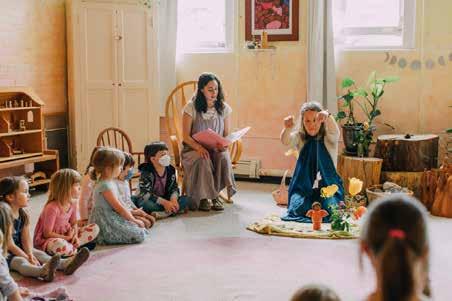
“I really do believe in trans joy over trans dysphoria,” says Theo. “It’s just limitless joy.”
May we all find this kind of joy — for ourselves and for every trans child.
Although it might not seem as present here in Portland, several lawmakers, school districts and religious leaders have joined the fray against gender-affirming care. However, in general, Oregon is a state with strong protections for trans people, and LGBTQ+ people. It’s one of only 15 states to have its policies rated “high” by the Movement Advancement Project, a nonprofit think tank dedicated to equity.
Currently, Democrats in the state legislature are championing a bill that would require private insurance to cover gender-affirming care (Oregon Health Plan, OHP, has covered it since 2015) and would also extend protections to patients and providers who may be or have already faced prosecution by laws like the one recently passed in Idaho making providing gender-affirming care a felony. Federally, more and more bills have been introduced, and passed, to restrict or outright ban gender-affirming care and to decimate some of the meager protections trans people retain in states like Florida, Texas or Missouri. Some bills focus on keeping young people from accessing this health care, and others focus on criminalizing the medical professionals who provide it.
“Trans people are terrified right now,” says Jenn Burleton, the director of TransActive Gender Project at Lewis & Clark College. Burleton grew up trans in the 1980s, arguably a much more difficult time to be openly queer in any way, but still, she goes on to say that she’s “never been as fearful for the safety and future of trans people in general, for our trans children” as she is today.
N o w A c c e p t i n g
P r e - K - 3 r d G r a d e
L e t n a t u r e a n d t h e a r t s n u r t u r e y o u r c h i l d ' s c r e a t i v i t y a n d i m a g i n a t i o n .
" I w i s h I c o u l d h a v e g o n e t o s c h o o l h e r e ! "
M o s t p r o s p e c t i v e p a r e n t s u p o n v i s i t i n g
O u r s t u d e n t s a r e m e t w i t h k i n d n e s s , s i m p l i c i t y a n d a w e l l - r o u n d e d
e x p e r i e n c e . T h e c h i l d r e n b e g i n t o i m m e r s e t h e m s e l v e s i n t h e w o r k o f c h i l d h o o d , w h i c h w e b e l i e v e i s p l a y . C h i l d r e n e n j o y a v a r i e t y o f h a n d s - o n p r a c t i c a l a c t i v i t i e s i n a s o c i al s e t t i n g t h a t w i l l d e v e l o p a s e n s e o f c o m p e t e n c e , s k i l l a n d c o m m u n i t y .

Robin Lanehurst grew up in St. Louis, Missouri, but is currently writing from North Portland where they live with their wife, toddler, and a small menagerie of pets. A former public-school teacher and counselor, Robin writes at the intersections of mental health, education, parenthood and social justice. She is white, queer, gender nonbinary and neurodivergent. You can find them on Instagram @robin_lanehurst or at robinlanehurst.com.

 BY SARAH VANBUSKIRK
BY SARAH VANBUSKIRK
Does your child still need afterschool care? Find options on page 12 and at pdxparent.com/after-school-care.
Parents of young kids often wonder when their child will be old enough to stay home alone. You’d think there would be a hard-and-fast rule, but actually that’s not the case. While Oregon’s legal code does offer guidance, ultimately, determining when a child is mature enough to be unsupervised at home is a decision left up to parents. Learn more about what the law, doctors, and other parents say about leaving kids home alone, and how to know when your child is ready.
Of course, it’s clear that babies, toddlers, and preschoolers need robust, hands-on care and generally older teens can be trusted to watch themselves. But figuring out exactly when a kid goes from needing a parent or caregiver 24/7 to being able to take care of themselves for a few minutes or hours at a time, is where it can get tricky.
“Experts recommend that your individual child should show readiness in terms of safety, independence and judgment and that this is typically closer to 12 years of age, but may be younger or older in some cases,” says Benjamin Sanders, M.D., M.S.P.H., M.S., assistant professor of general pediatrics at Oregon Health & Science University. (Read his tips in the box to the right.)

According to Clackamas County, there is no specific age provided by law. But there is a law that gives a minimum age guideline. Essentially, that is a minimum of 10 years old. However, Oregon’s child neglect law (ORS 163.545) stipulates that it is neglectful to leave a child under 10 “unattended at any place for such period of time as may be likely to endanger the health or welfare of such child.”
So, even that is not definitive, as some 8 or 9 year olds may do fine at home alone for 20 to 30 minutes while other 12 year olds may not. The truth is that like other developmental skills, your child may be ready a bit sooner or later than average.
Portland mom of three, Katie Sevigny, says that maturity came at different times for each of her children. “We started out small, running out for a quick walk or trip to the store to test the waters,” she says. Her youngest, who is now 11, is comfortable staying home for several hours during the day, but Sevigny says he’s not yet accustomed to more than short periods at night.
Federal law also leaves this decision to parents. According to the United States Children’s Bureau: “There is no agreedupon age when a child can stay home alone safely. Because children mature at different rates, you should not base your decision on age alone.”
Additionally, factors that may influence your child’s readiness include how well they follow guidelines and boundaries, how comfortable they are with asking for help when needed, how accessible support is if needed, their personality, and how safe they feel. Having access to a phone also boosts the comfort level for many families.
“We always still have a home phone,” says Sevigny, “because then we know they can always contact us.”
Sanders says to be mindful of your family’s surroundings. Do you live in a safe neighborhood with supportive and responsible neighbors? “Also, consider the risk inherent in your home,” he says. “Could your child have access to alcohol, prescription medications or unsecured guns at home?”
Sheryl Mansberger says she knew her twins were ready to stay home alone when they could “help with chores, feed their dog, call 911, lock doors, set an alarm on their Apple watch — and (they) were 10 years old!” They also have each other to rely on, she adds.
Children with siblings may feel more comfortable earlier since they won’t be alone, but unless they are close in age, another factor to consider is the responsibility of not only asking them to take care of themselves, but also a younger sibling.
When you feel your child is ready, begin by leaving them home alone for short periods, say while you take the dog on a walk or run a quick errand.
“Start by deciding what you mean by ‘stay at home,’” says Sanders. “Two hours in the afternoon is different from, say four or more hours. On a similar note, being alone at home with you available by phone and able to come home within 15 to 20 minutes in the case of an emergency is different from being alone without an ability to talk to you or have you come home if necessary.”
Then, if that goes well, you can increase the length of time that you’re gone. It can increase everybody’s comfort level if there are neighbors your kids can call or run to in case of an emergency, adds Sevigny.
Start out leaving in the daytime, progressing to leaving them at night once they’re ready. Additionally, always feel free to dial back the time if it seems to be too much for your child. For example, if they were worried or stressed in your absence, made a mess, or got into things they should not have.
The bottomline is that it’s your responsibility as a parent to decide when your child is ready to stay home alone. So, step back, assess your child’s responsibility, maturity, and comfort level, and then trust your judgment to make the right decision for your family.
Sanders makes these additional suggestions for things parents can do to help their child prepare for staying home alone:
• Review safety scenarios with your child.
• Inform trusted neighbors and share phone numbers.
• Review how to ask for help.
• Let your child know what to expect from you, and then meet those expectations or let them know if your plans must change.
• If you’re relying on cell phones, be sure to keep your phone charged and stay in an area with good service.
• Gradually increase your child’s chances to be at home alone .

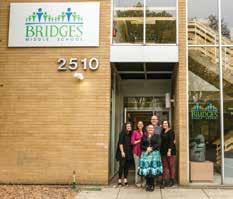

Number of Students
60 Student/Teacher Ratio
12-to-1
Average Class Size
12 students
Staff with Master’s Degree(s)
6 Percentage of Students of Color
30%
ADD/ADHD Support
Yes
Admission Deadline March 1 of the previous school year, then rolling as space allows Tuition
$26,750
Financial Aid Available Yes
Our small class settings for fifth to eighth graders incorporate individualized academics with social skills, therapies, and support that set the foundation for future success. Bridges is the only middle school in Oregon specifically designed for students with learning differences to reach their maximum potential — in a loving, nurturing atmosphere centrally located in downtown Portland.
For many Bridges students, this means the difference between effective learning and being passed along. It means positive social and emotional growth rather than isolation or, worse, bullying.

Address 2510 SW 1st Ave.
Website BridgesMS.org
Phone 503-688-2922
School Overview:
School Type Independent, private, special education
Grades Offered Fifth to eighth grade
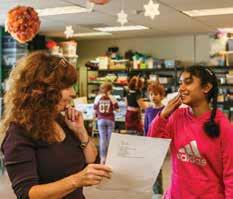
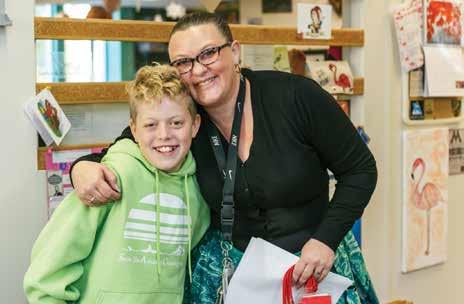
Religious Affiliation None
School Memberships and Accreditations
COGNIA, Oregon Department of Education
Number of Students
870, including 60 boarders
Student/Teacher Ratio
7:1
Average Class Size
16–18 students
Campus Size
59 acres
Faculty with advanced degrees
83%
Admission Deadline
Lower School: January 18

Middle and Upper School: February 6
Open House Dates
Lower School: November 2
Middle and Upper School: November 5 oes.edu/openhouse-ppg
Tuition
$28,800–$41,800 (day, pre-K–12th grade)
$73,300 (boarding, grades 9–12)
Financial Aid Available Yes
Activities
Art, music, theater, no-cut sports, and science expo
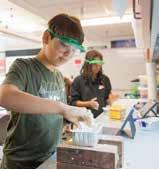
Summer School Offered
Yes (day camps)
oes.edu/summer
Before/After Care Yes
Graduates
99% attend four-year colleges
Rooted in inquiry and exploration, students at OES take an empowered role in their own education. Hands-on, discussion-based, project-oriented learning happens inside and outside the classroom, and each discovery leads to the next, driven primarily by the curiosity of our students.

Nestled within 59 wooded acres in Southwest Portland that include natural wetlands, nature trails, ropes courses and gardens, OES offers an outstanding educational experience for pre-K through grade 12 students, including boarding students in grades 9-12.
Address 6300 SW Nicol Rd., Portland, OR 97223
Website oes.edu
Phone 503-768-3115
School Overview:
Year Founded 1869
School Type Private, independent, co-ed, day and boarding
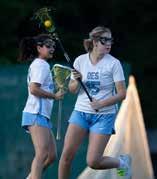
Grades Offered Pre-K to 12th grade
Religious Affiliation Episcopal
Languages Taught Chinese, Spanish and French
School Memberships and Accreditation
Northwest Association of Independent Schools


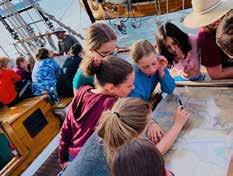
Cedarwood Waldorf School has distinguished itself by developing a uniquely contemporary expression of Waldorf education. Cedarwood is located next to historic Lair Hill Park in downtown Portland. Parents who choose Cedarwood highly value a curriculum that educates the whole child. They choose an educational approach that nurtures their children's growing physical, emotional, spiritual and academic capacities.
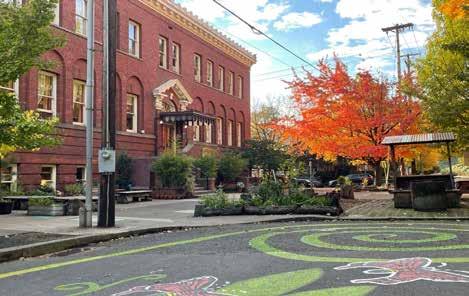
Address 3030 SW 2nd Ave.
Website cedarwoodschool.org/welcome-to-cedarwood

Phone 503-245-1477
School Overview:
Year Founded 1997
School Type Independent Waldorf
Grades Offered Pre-kindergarten-8th grade
Religious Affiliation None
Languages Taught Spanish and Japanese
School Memberships and Accreditations AWSNA , WECAN, NWAIS

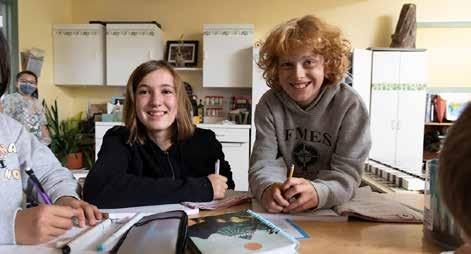
School Type
Catholic Montessori
Grades Offered
Pre-K-8th grade
Religious Affiliation
Catholic
Languages Taught
Spanish, German
Number of Students 270
Student/Teacher Ratio 12:1
Average Class Size 24
Tuition
$8,280-$13,980
Extracurricular Activities
Sports, STEM, Chess
School Type
Private Montessori
Grades Offered
Toddler-8th
Languages Taught
Spanish
Number of Students 285
Student/Teacher Ratio 10:1
Inclusive/Accessible Supports Yes
Extracurricular Activities
Dungeons and Dragons, Chess Club, Ceramics
The Franciscan Montessori Earth School has been inspiring children to expand their mind, nurture their spirit, and steward the Earth. Through the academic and experiential learning process developed by Dr. Maria Montessori, and influenced by the spirituality of St. Francis, students learn to respect themselves, and the Earth we share.
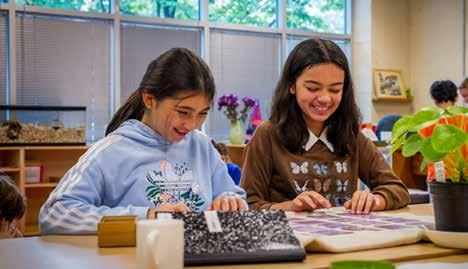
Address 14750 SE Clinton St., Portland, OR 97236
Website fmes.org
Phone 503-760-8220
Childpeace Montessori School is a place to belong! A strong Portland presence for almost 50 years, Childpeace has served hundreds of children from toddler to 8th grade by providing a high-quality Montessori education. Contact us to learn more or visit our website to tour our beautiful classroom environments!
Address 1516 NW Thurman St., Portland, OR 97209
Website childpeace.org
Phone 503-222-1197

School Type
Academic, Experiential, Literacy Focus
Grades Offered
Preschool to fifth grade
Number of Students
92
Student/Teacher Ratio
8-to-1
Average Class Size
12
Inclusive/Accessible Supports
Literacy, reading, Deaf and hard of hearing, speech.
Tuition
$10,750/year elementary, $10,950/year preschool (other services see website)
Admission Deadline
None/Rolling
Extracurricular Activities
After care, after-school ASL, Science, Chess, Yearbook, Art, Organic Gardening
School Type
Community Jewish Day School
Grades Offered
Infant to Eighth Grade
Religious Affiliation
Jewish
Languages Taught
Hebrew
Number of Students 175 (K-8)
Student/Teacher Ratio 10:1 (K-8)
Average Class Size 18 (K-8)
Inclusive/Accessible Supports
Social/emotional support services offered. Academic support services from specialists. Full-time school counselor. Accommodations provided as needed.
Tucker Maxon has it all: Amazing teachers, small class sizes, happy children, academic excellence, social and emotional learning, cutting-edge literacy curriculum, a great library, top-notch facilities, and playground, science, art, music, PE, parent volunteer opportunities, a caring community, before and after care, and all at a low cost.
Address 2860 SE Holgate Blvd.
Website tuckermaxon.org
Phone 503-235-6551
PJA is an inclusive Jewish community school that welcomes families of all backgrounds. Our hands-on interdisciplinary curriculum emphasizes collaborative learning, critical thinking, social-emotional development and community engagement. PJA students are empowered to think for themselves and work for the world.
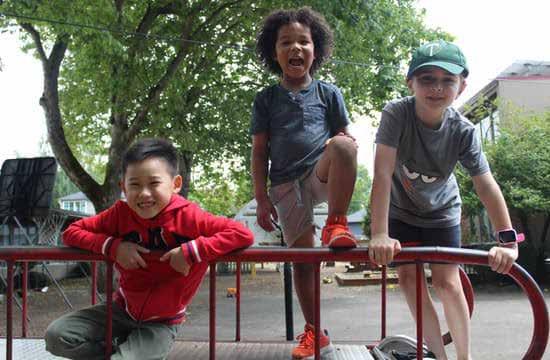

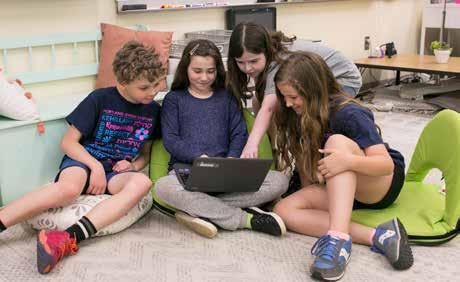
Address 6651 SW Capitol Hwy.
Website pjaproud.org
Phone 503-535-3599
School Type
Independent Progressive
Grades Offered
Pre-K-8th Grade
Languages Taught Spanish
Number of Students 150
Student/Teacher Ratio
8-to-1
Average Class Size 14
Admission Deadline Rolling
School Type Montessori


Grades Offered
Pre-K-K
Student/Teacher Ratio
Toddler 4:1, Primary 10:1
Average Class Size
Toddler: 10, Primary: 24

Inclusive/Accessible Supports
Accepts ERDC payments
Tuition
Varies by schedule, see website
Since 1972, we have offered an experiential and child-centered curriculum in a warm, welcoming community. We embrace the creativity, questions and risk-taking of childhood in a supportive, handson environment. We have teachers who inspire learning and build relationships so that every child is truly known. Preschool in West Linn, PreK-8th Grade in Oregon City.
Address 15544 S Clackamas River Dr. Oregon City, OR
Website themarylhurstschool.org

Phone 503-650-0978
Montessori Children's House offers authentic Montessori education in the South Waterfront, serving families with children 16 months-6 years. We are currently enrolling for immediate openings in our Primary (ages 3-6) Community; you can find up to date information about openings in our Toddler Community (ages 16-36 months) at mch-pdx.org.
Address 3626 S Bond Ave.
Website mch-pdx.org
Phone 503-360-1179

Touchstone Preschool provides the perfect balance of learning and play. Our proprietary curriculum, Links to Learning, prepares children for kindergarten and beyond by developing important academic, social and emotional skills. Call or schedule a private tour to learn more at TouchstoneSchools.com.
School Type Montessori School
Grades Offered Pre-K-6th grade
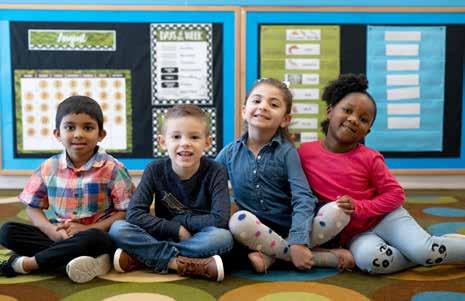
Languages Taught Spanish in the Elementary
Number of Students 170+
Student/Teacher Ratio 15:1
Admission Deadline Rolling
Other
Child-centered learning, individualized curriculum, access to outdoor space
Addresses 7090 SW Fir Loop Portland, OR 6355 NE Cornelius Pass Rd., Hillsboro, OR Website TouchstoneSchools.com
Phone 866-537-4455
MSB is an independent Montessori School for children ages 3-12, founded in 1977. Located on six woodland acres just west of Portland, we invite you to explore our beautiful school and learn about our authentic Montessori Preschool and Elementary Programs.
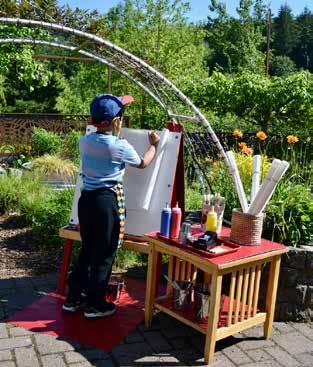

Admissions Events held for Parents on campus OctoberMarch.
Address 11065 NW Crystal Creek Ln.
Website msb.org
Phone 503-439-1597
School Type
International Baccalaureate & Immersion
Grades Offered
2 years-8th grade
Religious Affiliation
NA
Languages Taught
German, Mandarin & English
Number of Students 330
Student/Teacher Ratio 16:1
Average Class Size 16
Tuition
$12,480-$16,900 Annual
Admission Deadline
February 2024 & rolling for additional open spots
Extracurricular Activities Clubs, Athletics & Theatre
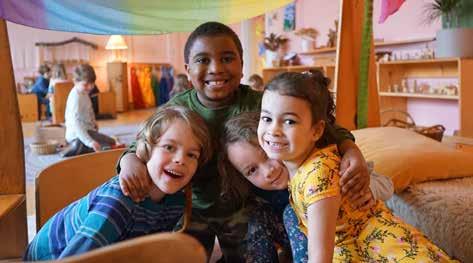

School Type Waldorf
Grades Offered
Pre-K-12
Religious Affiliation
None
Languages Taught
Spanish, Mandarin
Number of Students
320
Average Class Size 20
Admission Deadline Rolling
Extracurricular Activities Music, Sports and Art

As an IB World School we believe in a whole-child approach to learning for all our students 2 years to Middle School. With the support of the IB Programme framework and language immersion in German or Chinese, students at GIS are globally minded, adaptive, independent thinkers who grow to become lifelong learners.
Address 3900 SW Murray Blvd., Beaverton, OR
Website gspdx.org
Phone 503-626-9089
Our 7-acre campus, 15 minutes south of downtown Portland, is home to a vibrant community of families and students from preschool through 12th grade. Our students are met with a holistic and developmentally considered curriculum that fosters creative and flexible thinkers who follow their interests, take initiative, and make positive changes in the world.
Address 2300 SE Harrison St., Milwaukie, OR 97222
Website portlandwaldorf.org
School Phone 503-654-2200
School Type
Inquiry/Critical Thinking/Innovative Application
Grades Offered
K-8 with early entry
Number of Students 125-145
Student/Teacher Ratio 10-12 per teacher
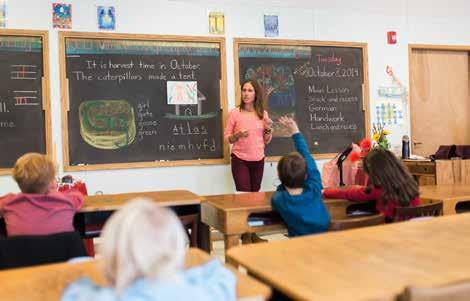
Tuition $15,960 plus fees
Admission Deadline
None
Extracurricular Activities
A wide variety of extracurricular options
School Type
Waldorf
Grades Offered K-8
Religious Affiliation
None
Languages Taught
German, Spanish
Number of Students 95
Student/Teacher Ratio 18:1
Average Class Size 18
Tuition $7,415-$9,965
Admission Deadline Open Enrollment
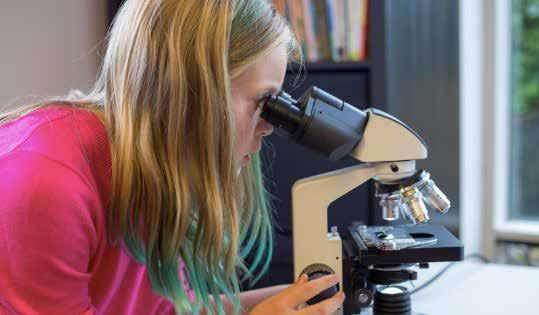
Art, design, science and engineering are lively, natural contexts for the introduction, development, and application of skills and concepts. Learners are challenged at the edge of their abilities and supported individually to achieve academically. Critical and creative thinking, collaboration, and craftsmanship are hallmarks of our work.
Address 234 S Bancroft St.
Website renpdx.org

School Phone 971-221-2311
Weaving academics with creativity to inspire joyful learning!
Address 13515A SE Rusk Rd., Milwaukie, OR 97222
Website micha-elschool.org
School Phone 503-882-3322

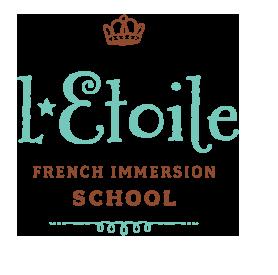
School Type
Pre-K & Elementary
Grades Offered
Pre-K (starting at 2.5) through Grade 5
Languages Taught
French
Number of Students
155
Student/Teacher Ratio
1:10
Average Class Size 16
Tuition $10,757-$15,986
Admission Deadline
Priority enrollment in February with rolling admissions thereafter
School Type
Language Immersion, International Baccalaureate (IB)
Grades Offered 2.5 years old-8th grade
Languages Taught
English, French, German, Spanish, Mandarin
Student/Teacher Ratio 9:1
Admission Deadline
Rolling (February 1: priority consideration)
Extracurricular Activities Athletics, After Care, Camps
40 countries represented and 50 languages spoken by our families
Give your child the gift of a second language! L'Etoile French Immersion School is an independent school accredited by the French Ministry of Education for students aged 2 1/2 through eleven. Our bilingual and bi-cultural environment prepares students for the world of tomorrow.

Address 5839 S Hood Ave.
Website letoilefrenchschool.com
School Phone 503-487-5321
French International School of Oregon provides an exceptional independent school education through the dynamic convergence of language immersion and the IB World School framework. Our students are empowered to be curious, think critically, challenge assumptions, and develop a love of learning.
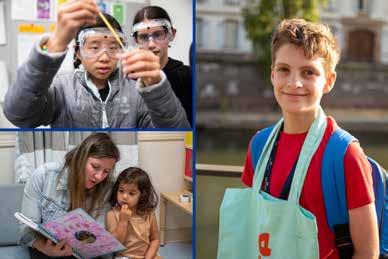

Address 8500 NW Johnson St., Portland, OR 97229
Website fisoregon.org
Phone 503-292-7776
School Type
Arts focused, college prep
Grades Offered 6-12
Religious Affiliation
None
Languages Taught
Chinese, Spanish, French
Number of Students 260
Student/Teacher Ratio 7:1
Tuition
$27,410-$29,230
School Type
Independent Christian
Grades Offered
Pre-K-12th grade
Languages Taught
Spanish, French, Latin, Japanese
Number of Students

650
Average Class Size 18
Tuition
$3,853-$11,805 variable tuition
Admission Deadline
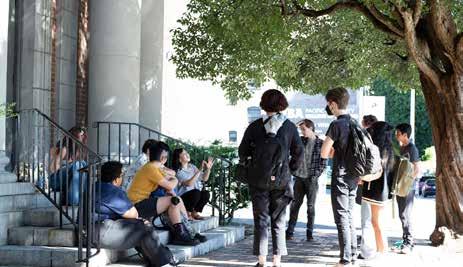
Rolling
Extracurricular Activities
Arts, athletics and student clubs
Before/After Care
Before and after school care offered. Summer programs available.

Northwest Academy is a progressive independent middle and high school located in downtown Portland, inspiring students daily through its unique academic and arts partnership. Find your people. Find your passion. Find yourself at Northwest Academy!
Address 1130 SW Main St., Portland, OR 97205
Website nwacademy.org
Phone 503-223-3367
PCS is an independent, fully accredited, non-denominational Christian school. Our students excel academically and participate in many extracurricular activities, including a variety of athletics and award-winning arts and music programs. We've been growing leaders in mind and spirit for over 75 years.

Address Two campuses: 12425 NE San Rafael St. and 11845 SE Market St.
Website pcschools.org
Phone 503-867-9214

School Type
International Baccalaureate, Language Immersion
Grades Offered
Preschool - 5th Grade
Languages Taught
Mandarin, Japanese, Spanish
Number of Students
400
Student/Teacher Ratio
9:1
Average Class Size
14
Admission Deadline
Rolling
Extracurricular Activities
Assortment of after school enrichment options
School Type
Private Lutheran Christian
Grades Offered
Preschool 3’s - 8th Grade
Religious Affiliation
Lutheran-Christian
Number of Students

130
Student/Teacher Ratio
17:1
Average Class Size 17 Tuition $8,600
Extracurricular Activities
Fine Arts, Music, Sports Program
Food Service
In-house nutritious lunch program
For over thirty years, we’ve offered full language and cultural immersion in a warm, loving environment that encourages curiosity and kindness. We provide three full language immersion programs – Mandarin, Spanish and Japanese – under one roof. We are proud to be an International Baccalaureate World School.

Address 2305 S Water Ave, Portland OR 97201
Website intlschool.org
Phone 503-226-2496 x110
At Pilgrim, we celebrate our children as gifts from God with unique talents, gifts, challenges and dreams. Through academic challenge, spiritual nurturing and opportunities to serve others, we strive to create an environment where our students flourish in body, mind and spirit.
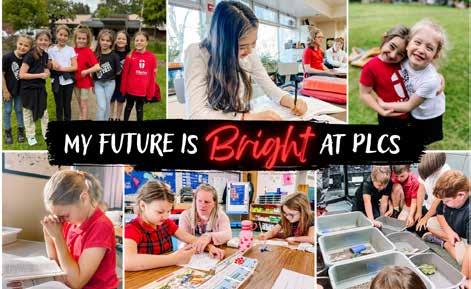
Address 5650 SW Hall Blvd., Beaverton, OR 97005
Website pilgrimbeaverton.com
Phone 503-644-8697
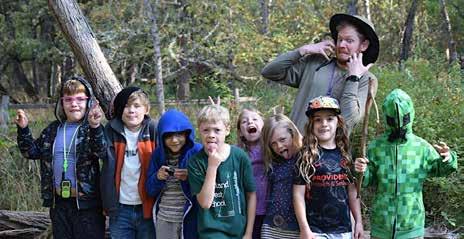
School Type
Forest School
Grades Offered
K-8
Languages Taught
French
Number of Students
60
Student/Teacher Ratio
1:10
Average Class Size 10
Tuition
$16,950
Extracurricular Activities
Archery, Ceramics, Woodworking

School Type
Private
Grades Offered
Pre-K-12
Religious Affiliation
Catholic
Languages Taught
Spanish and French
Number of Students
1,200
Student/Teacher Ratio
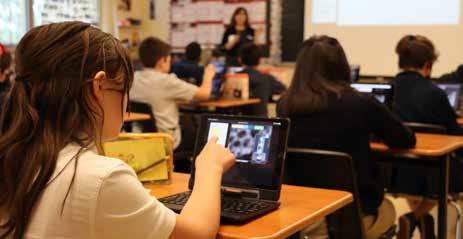
16:1
Average Class Size
16
Extracurricular Activities
No-cut athletics, music, theater Music

Private lessons available for people of all ages
Learning outside is so much fun! Outdoor learning supports social emotional learning and brain development. It can also reduce stress, improve sleep, increase academic performance, and build resiliency. At PFS, students learn outside every day! Our interdisciplinary curriculum blends academics with hands-on, project based learning. Students love going to school!
Address 4617 SE Milwaukie Ave., Portland, OR 97202
Website instagram.com/portlandforestschool
Phone 503-964-0158
Located on the Sisters of St. Mary of Oregon's beautiful 43-acre campus, Valley Catholic School is an engaging, supportive, faith-based education experience. Rigorous classes start early and college preparation begins in middle school. Students are empowered to learn, perform, compete and serve. VCS - Excellence in Everything. Opportunity for Everyone.
Address 4420 SW St. Mary’s Dr. Beaverton, OR 97078
Website valleycatholic.org
Phone 503-718-6500
Columbia River with the Fort Vancouver historical area, spanning WA-14. More than a mere pedestrian walkway, this bridge is paved and fully wheelchair-accessible, and shares loads of local history. Plus it’s landscaped entirely with native trees, shrubs and flowers from prairie, forest and wetlands. Helpful interpretive panels tell about the various plants.
Standout features of the bridge include works by Native American artist Lillian Pitt. Pitt helped create the welcome gate and also Spirit Baskets inspired by Columbia River petroglyphs. The theme of River, Land and People is featured at three scenic overlooks. There is also a series of nine steel panels, featuring the words for river, land and people in nine different Native languages. On the waterfront side slope of the bridge, you will find multiple historic photos of the area, including stories of the original Kaiser shipyards.
One of my favorite jogging paths is the route around Fort Vancouver. It’s also a favorite for my husband and 7-year-old son. We love visiting the area for its wide open spaces and historic apple orchard, and, of course, the historic Fort, surrounding gardens, and playground. But the journey getting there
is just as notable.
Fort Vancouver connects to the Vancouver waterfront via a unique land bridge — a path more like a scenic walking trail than your traditional spanned metal structure.
The 40-foot-wide Vancouver Land Bridge connects the lengthy Vancouver waterfront walking trails along the

Our family loves crossing the land bridge by bike for rides throughout downtown Vancouver or on foot, pushing our heavy-duty wagon along the water to McMenamins on the Columbia. This route of travel easily connects you to the historic Fort and gardens, the Fort Vancouver playground, or for a longer walk to the public library.
Because the bridge connects multiple standout Vancouver features, there are many activities that can be combined into a single trip. Access to Fort Vancouver is
Take a stroll across the Vancouver Land Bridge for scenic views, art honoring Indigenous people, a bit of history and plenty of space to play at historic Fort Vancouver.CONFLUENCE
available during open hours for $10 per adult; children 15 and younger are free. Pro tip: You can see the oldest cabins across the historic apple orchard near the bridge entrance without paying admission to Fort Vancouver.
One of our family’s favorites is the Historic Demonstration Garden. Pro tip: No dogs are allowed here, so leave the family pet at home. If you explore in spring or early summer, the flowers turn the location into what my kiddo calls “the smell-good place.”

Bring a picnic basket and move up the hill toward Officer’s Row. There is a fun playground a short walk away with pointy-topped, fort-themed features best for ages 5 to 12, and loads of room for a lunch on the green. Due to the location of the nearby Pearson Airfield, this trip is great for plane watchers as small aircraft take off and land frequently. The bridge also runs near the waterfront train tracks if you have a kid like mine whose Thomas obsessions are lasting.
Fun for all ages, a visit to the land bridge can help create a historically fun outing or simply a family day filled with fields and flowers — just plan the trip your family would like best!
The land bridge can be easily accessed from either the north or south with free parking at either entrance. Both entrances are also a short drive off the I-5. The south access to the feature is found at Columbia Way Boulevard at Old Apple Tree Park and the north entrance is located to the west of the historic fort. Park along the waterfront or in the newly redone parking lot near the Fort and both access points are a short walk away along well-maintained trails.
The area is stroller-friendly and dog-friendly, but there are limited bathrooms nearby. Access to the bridge and Fort exterior is free. Admission to Fort Vancouver is $10 per person; kids ages 15 and under are free. Visit nps.gov/fova/index.htm
Kate Hagan Gallup has experience with marketing clients big and small. A mother to a little boy, her most recent roles and digital skills help share her passion for parenting, eco-consciousness and all things food with a larger audience.

wide
delicious dining options, you’ll make out like a bandit at The Heist, a new Woodstock food cart pod that was once a bank parking lot.
 STORY AND PHOTOS
BY DENISE CASTAÑON
STORY AND PHOTOS
BY DENISE CASTAÑON
4727 SE Woodstock Blvd., theheistpdx.com.
Sunday-Thursday, 8 am-9 pm; and Friday and Saturday, 8 am-10 pm.
night before. And he was right, Smaaken’s wholegrain waffles are leavened with yeast for 24 hours, which results in a crispy exterior, and a light and tender interior. He devoured his waffle served folded in half.
My 11-year-old daughter, Adela, was delighted to see smash burgers on the menu at Fresh N’ Funky (pictured below). She ordered the regular smash burger (as opposed to the kids’ one) and didn’t realize it had two patties ($15). It came out quickly and was piping hot, and
In
spring, my kids and I watched the ongoing construction of The Heist food cart pod on the drive to and from school. When actual carts started appearing at the site of a former US Bank that was held up in 2010, we got excited. A cool, new cart pod we could walk to? Yes, please.
When we visited for lunch on a sunny Saturday, the good news kept rolling in. There was plenty of outdoor seating under umbrellas as well as a completely shaded patio behind the old bank building. (Indoor seating in the old bank is still in the works.) I liked the clever railing designed with currency symbols. And some of our favorite types of
food could be found all in one spot. My kids counted 15 carts, 13 open. One of the not-yetopen ones had my husband and I downright giddy: Sammich. We are big fans of its Chicago Italian Beef sandwich and Zombie Fries at the Burnside location.
Since Sammich was not open, we tried other vendors. My 8-year-old son, Cruz, can eat breakfast at any time of the day, so he chose to get a kids’ waffle with maple butter and powdered sugar from Smaaken Waffles (pictured above, $5.50). “These are like the ‘good waffles,’” said Cruz. He was referring to the yeasted waffles I make for my family when I have the foresight to prep batter the

With a
variety of
she tore through it and the fries it came with.

I landed on a Philly sandwich ($14) from Mike’s Cheesesteaks. I asked if I could sub waffle fries for the regular fries that came with it, but it didn’t happen. And I wasn’t asked my name, or given a buzzer or number for my order. This all should have been a clue for me. Long after my husband and kids had their lunches, I was still waiting for mine. In fact, I was still waiting after they finished. Finally my order was up nearly 40 minutes after I placed it. The cheesesteak was hefty and tasty, but it’s clear the cart is still working out some kinks.
My husband was tempted by barbecue from The Pit and Caprese Salad from Romo Licious Cafe, but he ultimately ordered Spicy Dragon rolls filled with spicy tuna, tempura shrimp, avocado and cucumber from Wasabi Sushi ($14) and declared them to be delicious. I’ve never seen him so excited about a cart pod before. “This is the best cart pod ever, they have all my favorite things!” Other carts we did not try included shawarma, fried chicken, vegan and vegetarian bowls, and Thai, Chinese, Himalayan and Indian cuisine. After he’d finished his sushi, he checked to see what time Smaaken opened and was already plotting a time to come back for breakfast.
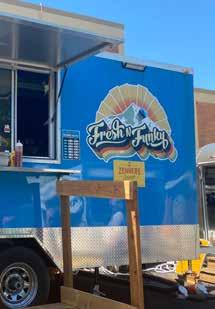
Kerr is here 24/7 with inpatient crisis psychiatric children’s mental health care and programs for children, teens, and adults with intellectual and developmental disabilities, empowering them to lead self-determined lives.
“I have a big place in my heart for Kerr. . .our daughter now sees a path; she has hope!”
–Parent of a Kerr teen clientEditor Denise Castañon loves exploring Portland’s family-friendly dining scene with her husband, 11-year-old daughter and 8-year-old son.
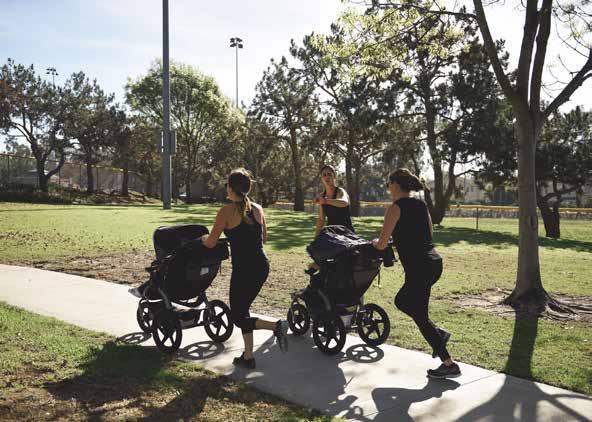
Winner Fit4Mom
Multiple locations, fit4mom.com
Winner Hollywood Children’s Dentistry
3839 NE Tillamook St., hcdpdx.com
Going to the dentist is a tough sell for kiddos, but Dr. Sheena Kansal and Dr. Natasha Bramley and their staff go above and beyond to make children feel comfortable as they get their teeth cleaned. The office is bright and colorful, featuring popular kids’ movie art with a toothy twist. And there’s even a play area.
Top 5
Dr. Pike Dentistry for Children
Dentistry for Kids
Little Smiles Pediatric Dentistry
Sprout Pediatric Dentistry & Orthodontics
World of Smiles Pediatric Dentistry
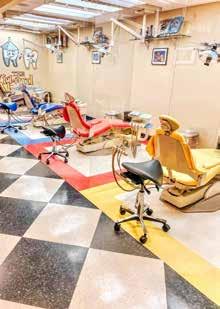
“Workouts created by moms, for moms.” That’s the motto of Fit4Mom. This repeat PDX Parent Reader Favorites winner has four locations across the Portland area and focuses on women’s healthy journeys into and throughout motherhood. There are pregnancy and postpartum classes, barre, and total-body workouts. Even better, many fitness moves incorporate strollers, so kiddos are welcome!
Top 5 Barre3
Hike it Baby
Mittleman Jewish Community Center
Multnomah Athletic Club
Ready Set GROW Yoga and Dance Studio
Winner Metropolitan Pediatrics, LLC
Multiple locations; metropediatrics.com
No matter where your family is in the Portland area, there’s likely a Metropolitan Pediatrics office close by. With six locations in the Portland area, it’s convenient to get medical care for your kid. There are 50 providers on staff, including specialists in behavioral health, lactation and sports medicine. And in addition to all the medical stuff, the team at Metropolitan Pediatrics also offers ear piercing!
Top 5
Broadway Medical Clinic, LLP
OHSU Doernbecher Pediatrics Clinic
Pediatric Associates of the Northwest
Randall Children’s Pediatric Care at Legacy Emanuel Sellwood Medical Clinic
Winner Harper’s Playground organization harpersplayground.org
It all started with the creation of an inclusive, accessible playground in North Portland by co-founder G Cody QJ Goldberg for his daughter, Harper. Today, thanks to dedication of the Harper’s Playground organization, plus community support and partnerships with neighborhood associations and Portland Parks & Recreation, that accessible Arbor Lodge playground isn’t an anomaly in the Portland area. And more are being funded and built!
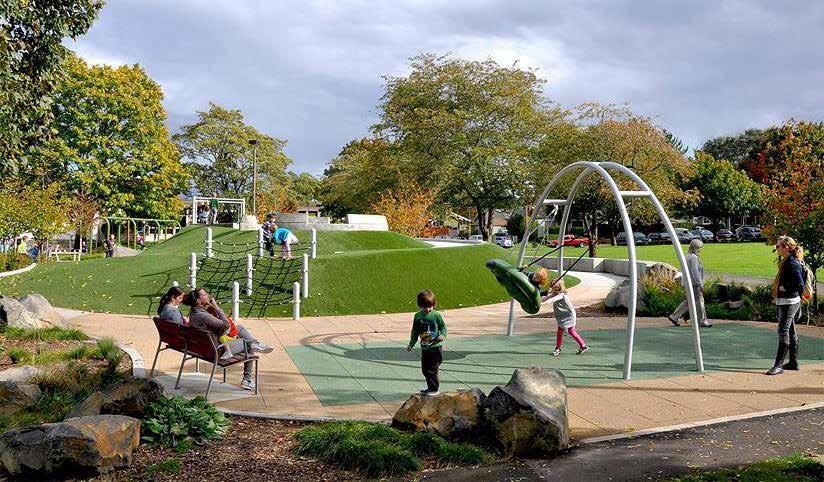
Top 5
Albertina Kerr’s Children’s Developmental Health Services
PILEA Play Sensory Kids, LLC
Spectra Gymnastics
Tucker Arts Camp
Winner Brave Care
Multiple locations, bravecare.com
This repeat PDX Parent Reader Favorites winner is open daily, with three locations for families needing primary and urgent care. Brave Care also offers telehealth services. Pro tip: Check out their parent tools online, including a symptom checker, medication dosage guide and more.

Top 5 Columbia Clinic Urgent Care
Kaiser Permanente
Legacy GoHealth Urgent Care
Shriners Hospital’s Walk-in Fracture & Sports Injury Clinic
ZoomCare
Winner Ronald McDonald House Charities of Oregon & SW Washington
Multiple locations, rmhcoregon.org
Since 1984, Ronald McDonald House Charities of Oregon & SW Washington has been providing access to medical care, community and support for children experiencing serious injury or illness — and their families. Because of the charity, families that need to be close to the hospital for their kids are able to stay at one of the four Portland-area homes — at no cost. And the Meals from the Heart program offers nutritious meals to families during their stay. There’s also an in-hospital program.
Top 5
Help Elevate Learning Processing, Inc.
Northwest Pediatric & Family Nutrition
Northwest Reading Clinic
OHSU Casey Eye Institute
Rose Bud Speech Therapy

Head to East Portland for the Multicultural Kids Festival to celebrate Portland’s diverse communities. Hosted by the Slavic Community Center of NW, the day will be filled with kidfriendly performances, crafts, activities, food and more. Sunday, August 20, 11:30 am-6 pm. At Ventura Park. Free. Find out more at facebook.com/events/223345327100649. — Denise Castañon

It’s obon season! The summertime Japanese festival, commemorating one’s ancestors is an enriching cultural experience; plus there’s tasty food. Head to the Oregon Buddhist Temple for ObonFest for bon odori (dancing), colorful lanterns, kids’ activities, food and more. Saturday, August 5. Free admission. 3720 SE 34th Ave., oregonbuddhisttemple.com.
— Tiffany Hill
Superhero (and comedy) fans will love Miss Electricity, a fun, feel-good superhero play performed by Catalyst, the Northwest Children’s Theater’s Youth Company and playing at The Judy. See what happens when fifthgrader Violet becomes Miss Electricity and gets struck by lightning — twice! Pro tip: Best enjoyed by ages 7 and older. Weekend days from Saturday, August 12 to Sunday, August 20. Tickets start at $15. Nwcts.org/shows/misselectricity. — T.H.

Your family will dig the giant sandcastles at the Sand Island Sand Castle Competition. A weekend pass includes your choice of memorabilia and a water shuttle to and from Sand Island — look for the dock directly in front of the St. Helens City Hall. (You can also camp on Sand Island: sandislandcampground.com.) Sandcastle masters from around the country will be creating incredible sculptures. And you can enjoy the scenic beaches of Sand Island; you’ll want to pack as if you are going for a beach trip — think sunscreen, water bottle, beach towels and chairs, and sand toys. Saturday and Sunday, August 5-6, 10 am-6 pm. $15 for ages 3 and older. Ages 2 and younger are free. Get tickets at discovercolumbiacounty.com — D.C.

Rivers and lakes can have hidden hazards.
When boating, floating, or even just splashing around, make sure everyone wears a life jacket that fits.

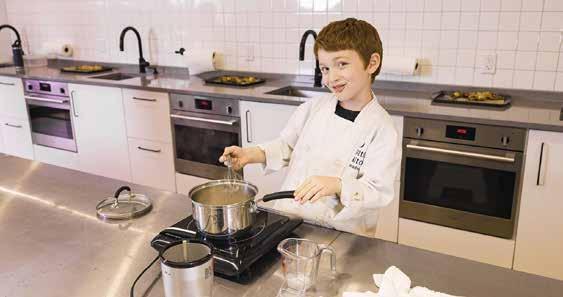
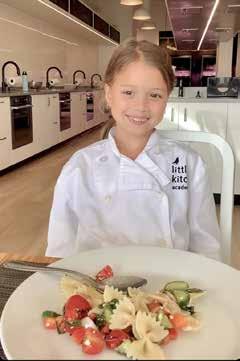
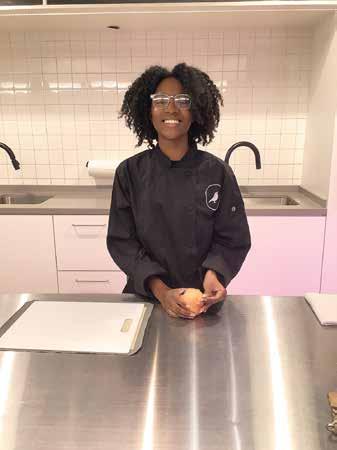





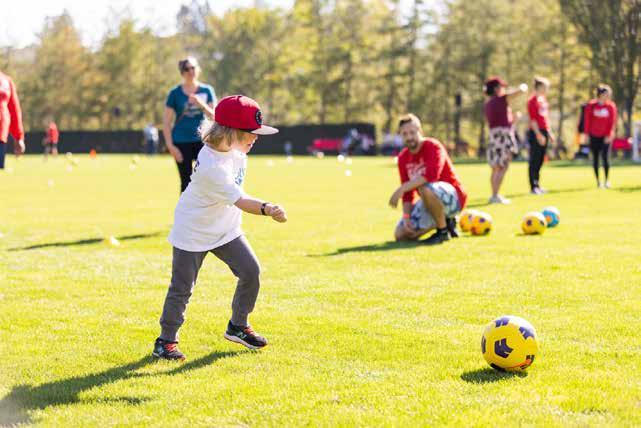






At Evergreen Virtual Academy, we’ve created a special online experience for young learners that’s convenient, safe, and supportive. We believe when school has no walls, learning has no boundaries.


• FREE, accredited K-12 public school
• Bully-free, safe, at-home education
• Ideal for students on the Autistic Spectrum
• Dedicated advisor for every student
• Clubs, field trips, and social opportunities
Thousands of Oregon parents choose EVA for a high-level education and one-on-one support.
“Going to EVA has helped my son so much with his anxiety. We love the flexibility and safer environment.”
—EVA Parent
